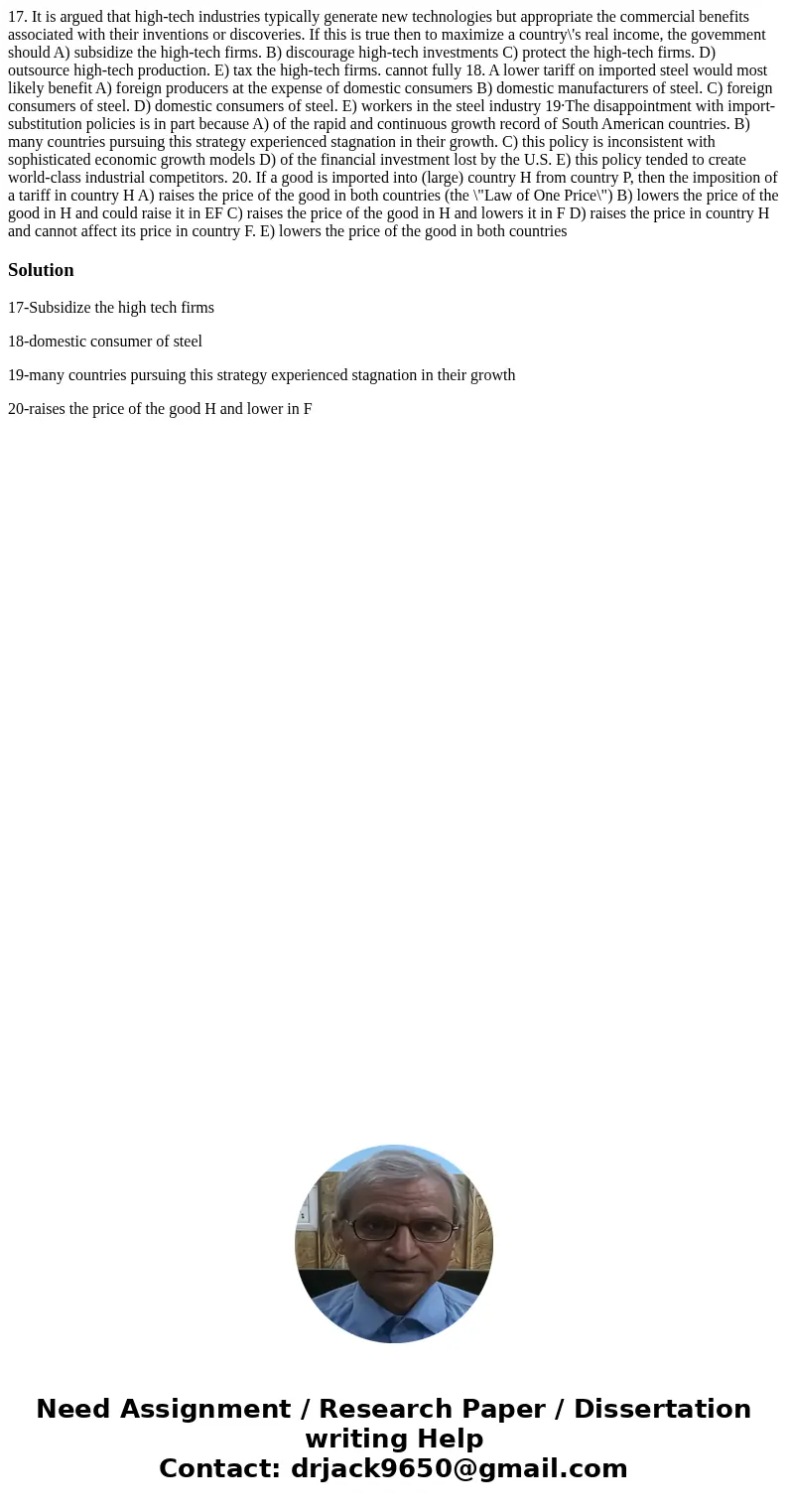17 It is argued that hightech industries typically generate
17. It is argued that high-tech industries typically generate new technologies but appropriate the commercial benefits associated with their inventions or discoveries. If this is true then to maximize a country\'s real income, the govemment should A) subsidize the high-tech firms. B) discourage high-tech investments C) protect the high-tech firms. D) outsource high-tech production. E) tax the high-tech firms. cannot fully 18. A lower tariff on imported steel would most likely benefit A) foreign producers at the expense of domestic consumers B) domestic manufacturers of steel. C) foreign consumers of steel. D) domestic consumers of steel. E) workers in the steel industry 19·The disappointment with import-substitution policies is in part because A) of the rapid and continuous growth record of South American countries. B) many countries pursuing this strategy experienced stagnation in their growth. C) this policy is inconsistent with sophisticated economic growth models D) of the financial investment lost by the U.S. E) this policy tended to create world-class industrial competitors. 20. If a good is imported into (large) country H from country P, then the imposition of a tariff in country H A) raises the price of the good in both countries (the \"Law of One Price\") B) lowers the price of the good in H and could raise it in EF C) raises the price of the good in H and lowers it in F D) raises the price in country H and cannot affect its price in country F. E) lowers the price of the good in both countries 
Solution
17-Subsidize the high tech firms
18-domestic consumer of steel
19-many countries pursuing this strategy experienced stagnation in their growth
20-raises the price of the good H and lower in F

 Homework Sourse
Homework Sourse